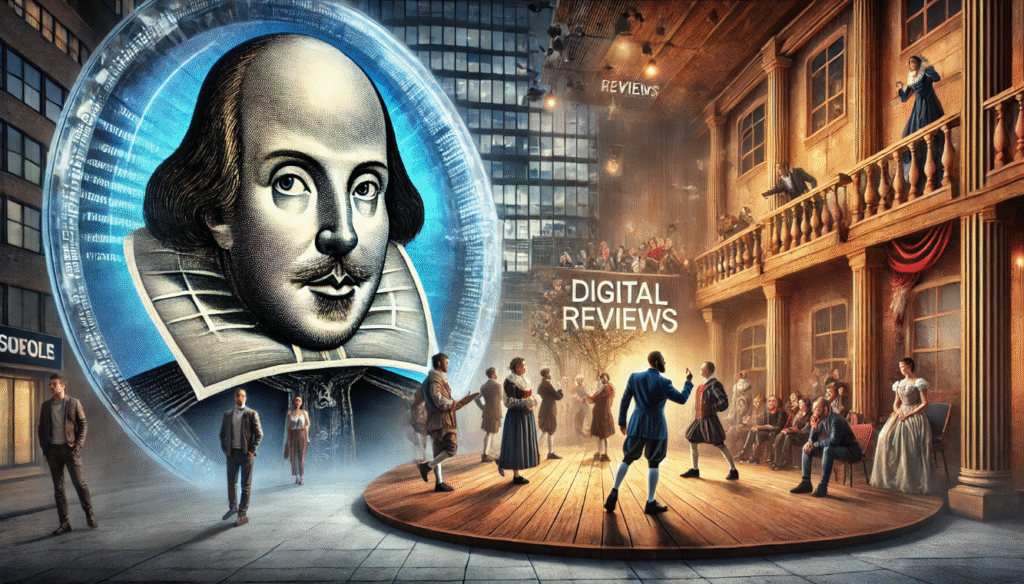
Understanding The Role of Shakespeare in Shaping Theatrical Criticism: A Deep Dive into His Lasting Impact on Modern Theatre Review
Shakespeare isn’t just the name on a dusty bookshelf—he’s a force that still shapes the world of theatre today. 🌟 But what if we told you that the role of Shakespeare in shaping theatrical criticism is far deeper than just the occasional mention of “To be, or not to be”? Whether you’re a theatre enthusiast, aspiring critic, or curious about how theatre reviews come to life, understanding this influence is essential.
Over the centuries, Shakespeare’s groundbreaking contributions have transformed how we evaluate performances, dissect characters, and analyze the essence of a play. But in today’s digital age, how do his 400-year-old works still hold the key to understanding modern theatre? This article will dive into the lasting impact Shakespeare has had on theatrical criticism, revealing how his methods are still used by critics and directors alike to evaluate contemporary performances.
Table of Contents
Toggle1: The Foundation of Theatrical Criticism and Shakespeare’s Contribution
Before Shakespeare, theatre was primarily a form of entertainment, and critics weren’t yet a well-established part of the scene. Critics often came later, evaluating performances based on popularity or basic storytelling. But Shakespeare revolutionized theatre in ways that forever changed how we think about and critique performances. 🎭
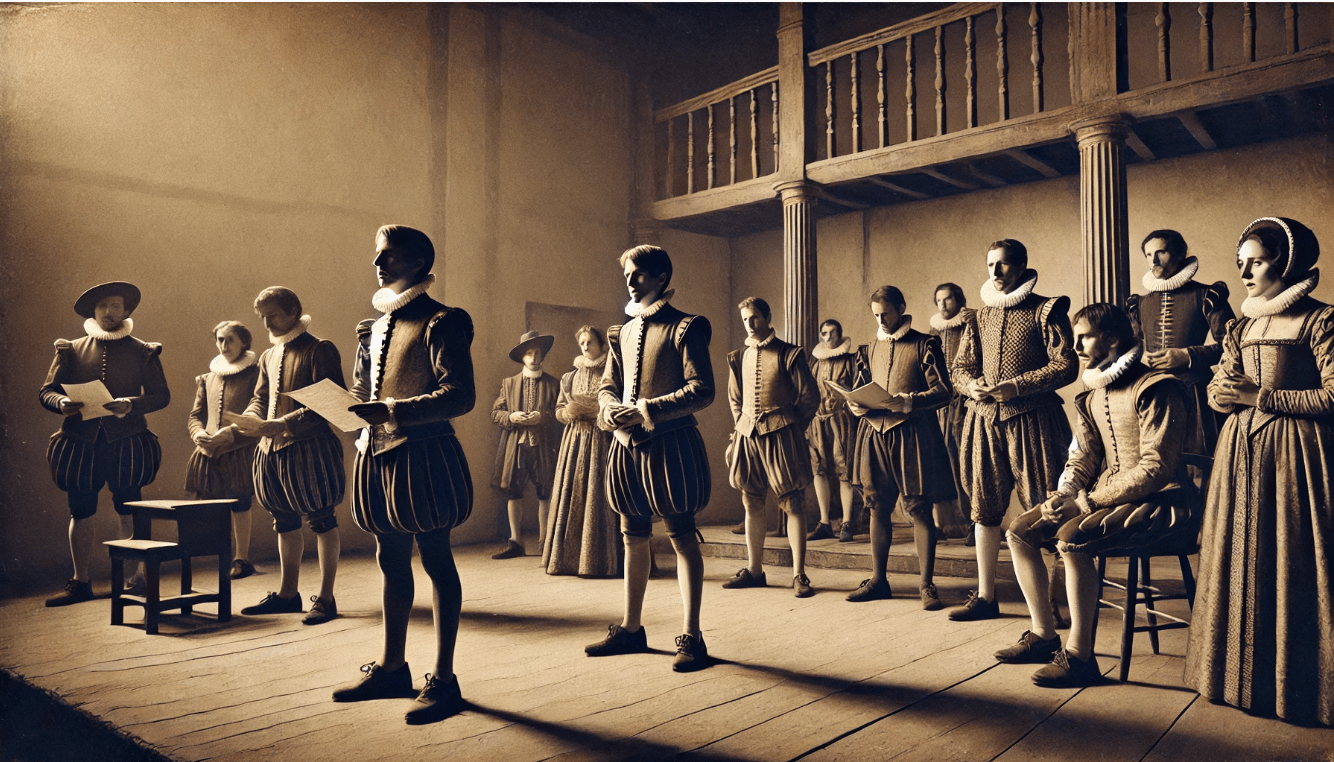
Shakespeare’s Impact on Theatre and Early Criticism
Shakespeare’s influence on theatrical criticism began as soon as his plays hit the stage. He brought complexity to both characters and plotlines, something critics hadn’t seen before. Instead of focusing purely on the action, Shakespeare made audiences—and critics—question deeper themes such as power, morality, and human nature. This created a shift from simply evaluating the performance to considering the emotional and intellectual weight of a play. 👀
For example, in Hamlet, critics don’t just review how well Hamlet delivers his lines; they dive into the character’s internal conflict, exploring what it says about the human experience. This depth of analysis is now a staple of modern theatrical critique.
Shakespeare and the Rise of Analytical Criticism
Before Shakespeare, theatre critics typically evaluated performances on surface-level aspects like delivery and spectacle. However, Shakespeare’s works pushed critics to look deeper. His intricate plots, layered characters, and use of language sparked the growth of analytical criticism, which focuses on breaking down the components of a play—not just the plot but the subtext, character arcs, and moral dilemmas. 🧐
Shakespeare’s King Lear and Macbeth, for instance, forced critics to address the complexities of human flaws, fate, and ambition. In doing so, critics moved from simply saying whether a play was “good” or “bad” to understanding why it resonated so deeply and how it mirrored the complexities of real life.
Criticism Beyond Performance: Shakespeare’s Lasting Legacy
Shakespeare didn’t just impact critics in the traditional sense; he also influenced how modern critics assess the performance of actors and directors. Today’s theatre critics look at much more than just the actor’s ability to memorize lines or hit marks. Instead, they analyze how the actor embodies the essence of the character, much like the critics of Shakespeare’s time did—only now, the analysis is much more refined and rooted in his legacy. 💡
In essence, Shakespeare’s contribution to theatrical criticism helped define it as a deeper, more thoughtful discipline, one that encourages critics to think beyond the stage and explore the psychological, philosophical, and emotional dimensions of a play.
2: Shakespeare’s Literary Innovations and Their Impact on Criticism
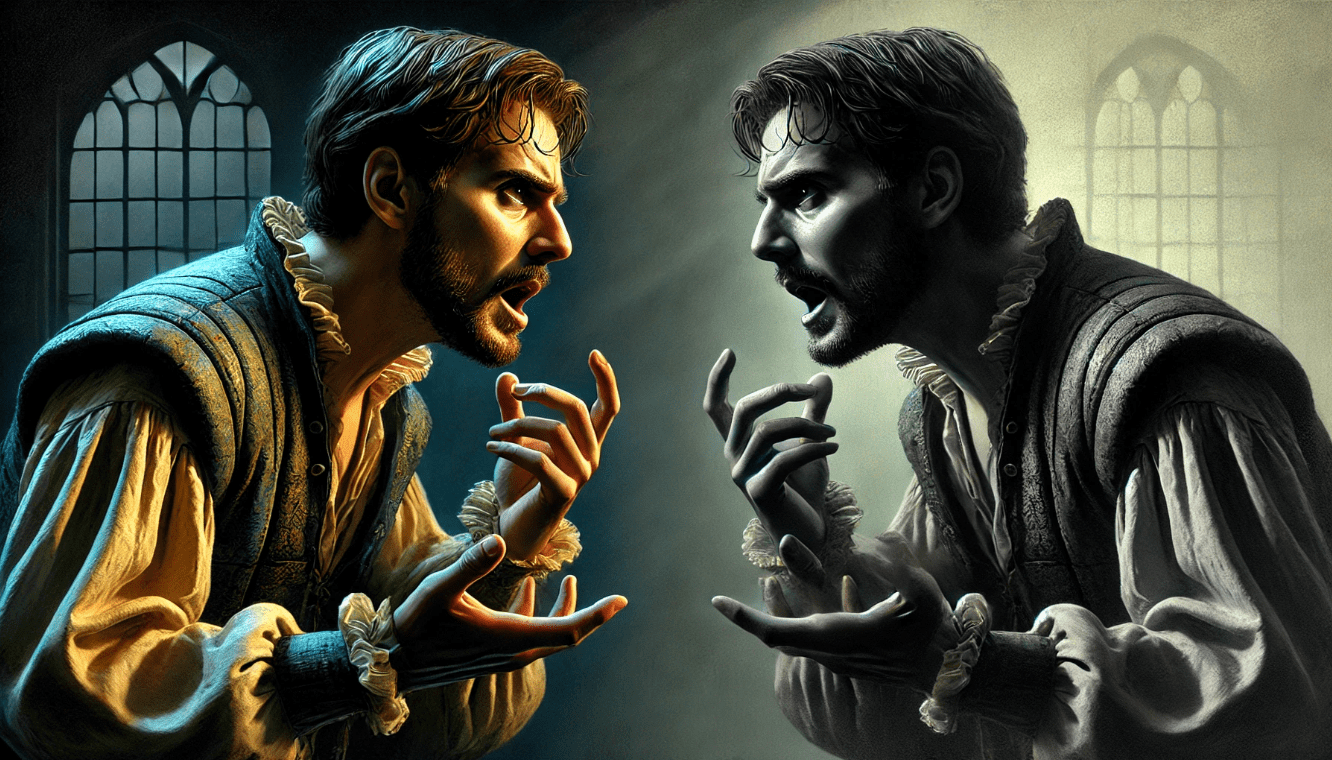
Shakespeare wasn’t just a playwright—he was a revolutionary force in the world of literature and theatre. His innovations didn’t just entertain; they reshaped how critics analyze theatre. From character development to his mastery of language, Shakespeare’s literary techniques laid the foundation for much of modern theatrical criticism. 🌟
Complex Characters: The Heart of Criticism
One of Shakespeare’s most significant innovations was his ability to create characters that were deeply layered and psychologically complex. Take Hamlet, for example. Rather than being a simple hero or villain, Hamlet is torn by internal conflict, making him relatable and human. Critics didn’t just ask, “Did the actor perform well?” Instead, they dug into the psychological and emotional complexities of Hamlet’s character, discussing how his internal struggles reflected human nature. 🧠
This focus on character depth became a major part of theatrical criticism. Today, critics often evaluate performances based on how well actors portray complex emotions and internal struggles—something that stems directly from Shakespeare’s works.
The Power of Language: Shaping Dialogue and Subtext
Shakespeare’s use of language also changed the way critics analyze plays. His mastery over dialogue and subtext allowed characters to express deeper meanings, often revealing more than what was on the surface. Take Lady Macbeth in Macbeth. Her dialogue not only conveys her ambition but also exposes her guilt and paranoia in subtle, powerful ways. 🌑
Critics began to recognize the importance of subtext—the unspoken messages behind the words. Shakespeare’s intricate use of language opened the door for critics to analyze not just what characters said, but how they said it, and what their words really meant in the context of the story.
Innovative Storytelling: Structure and Themes
Another area where Shakespeare revolutionized theatre was in his storytelling. Unlike many playwrights of his time, Shakespeare didn’t rely on simple plot structures or predictable outcomes. His plays often featured multiple plotlines that intersected, creating a rich, layered narrative. For example, in A Midsummer Night’s Dream, the blend of magical realism and comedic miscommunication weaves a complex story that’s both funny and thought-provoking. 🎭
This innovative structure changed how critics approached a play. Today, when reviewing a performance, critics often consider not just the plot, but the structure—how various narrative threads come together, how themes are developed, and how the playwright keeps the audience engaged. Shakespeare’s use of multiple themes—love, betrayal, ambition, and fate—helped critics develop frameworks for analyzing the thematic depth of modern plays.
Emotional and Philosophical Depth
Shakespeare’s works are rich in themes that resonate with audiences on a deeply emotional and philosophical level. The themes of power, love, betrayal, and morality in his plays were groundbreaking, and they still remain relevant in today’s world. His exploration of the human experience forced critics to look at plays not just as stories, but as reflections of human nature.
3: The Role of Shakespeare in Modern Theatre Criticism
Shakespeare’s influence on theatre criticism goes far beyond his time, continuing to shape how critics evaluate plays and performances today. His works are not just masterpieces of literature; they are also the cornerstone of modern theatrical critique. Let’s explore how Shakespeare’s legacy still plays a pivotal role in shaping contemporary theatre criticism. 🎭
Shakespeare as the Benchmark for Theatre Criticism
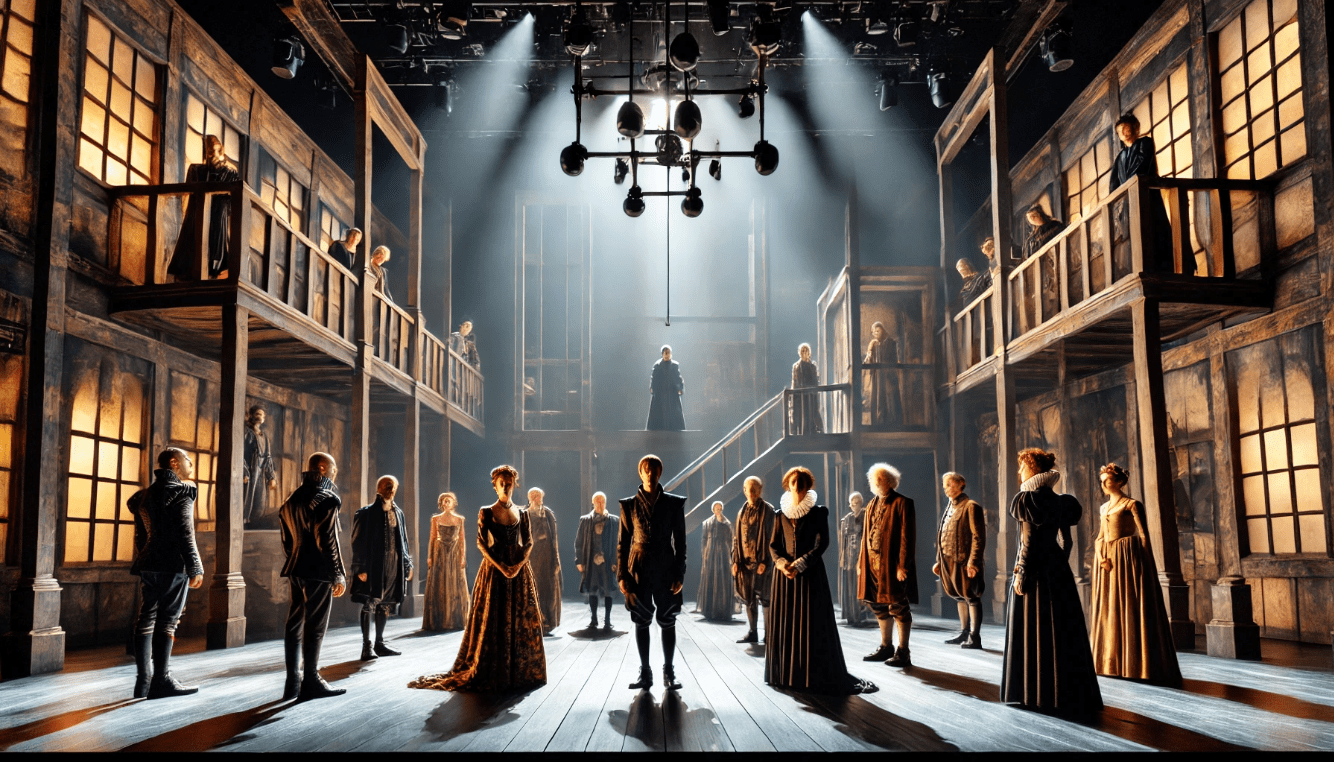
One of the most enduring aspects of Shakespeare’s impact is how his plays serve as a benchmark for modern theatre critics. His works are often used as a reference point when evaluating new plays, guiding critics to assess elements like plot structure, character development, and thematic depth. When critics review a new play, they often compare it to Shakespeare’s use of conflict, moral ambiguity, and complex character relationships. This comparison helps provide a framework for understanding how well the play performs in relation to the timeless qualities found in Shakespeare’s work. 🌟
Shakespeare’s Influence on Theoretical Approaches
Shakespeare’s plays have also contributed to the development of modern critical theories, such as Formalism, New Criticism, and Performance Criticism. These approaches focus on different elements of a play, from its structure and language to the way it’s staged and performed. Critics today use these frameworks to evaluate how plays are presented, often referencing Shakespeare as an example of how a well-structured, deeply meaningful play should be constructed.
For example, Performance Criticism looks at how the text is brought to life on stage, focusing on aspects like acting, direction, and staging. Shakespeare’s works, which are often performed in various adaptations, continue to inspire this type of analysis, encouraging critics to examine how modern productions interpret his work and make it relevant to today’s audience. 🧐
Thematic Depth: Shakespeare’s Influence on Contemporary Criticism
Another key area where Shakespeare’s influence is evident is in the thematic analysis of modern plays. Shakespeare’s exploration of universal themes such as power, betrayal, love, and morality set the stage for how critics approach the deeper meanings behind contemporary plays. When reviewing a new play, critics often look for how well these themes are developed and how they resonate with modern audiences.
Take, for instance, the theme of ambition in Macbeth. Today’s critics might analyze how ambition is portrayed in modern plays, asking whether it reflects similar human motivations or how it has evolved in contemporary society. Shakespeare’s exploration of complex moral dilemmas offers a model for critics to assess how themes are tackled and how they resonate with the audience’s understanding of the world. 💭
Shakespeare in the Age of Digital Criticism
In today’s digital era, Shakespeare’s legacy remains as strong as ever, even in the world of online theatre criticism. Social media platforms and digital publications allow theatre enthusiasts and critics alike to share their opinions on the latest productions. Shakespeare’s works continue to serve as a yardstick for both traditional and online critics, often sparking lively discussions on Twitter, Instagram, and review websites.
5: The Digital Age: Shakespeare’s Influence in the Age of Online Criticism
In today’s digital world, Shakespeare’s influence on theatrical criticism isn’t confined to the traditional stage or academic journals. With the rise of social media, online platforms, and AI-powered tools, his legacy continues to shape how we discuss and critique theatre in the digital age. Let’s explore how Shakespeare’s impact extends into the world of online criticism and why his work still resonates in the digital sphere. 🌐

Shakespeare and Social Media: A New Era of Theatre Criticism
Social media has revolutionized the way theatre is discussed. Platforms like Twitter, Instagram, and TikTok have given everyone—from professional critics to casual theatre fans—a voice to share their opinions. Shakespeare’s works are frequently used as reference points in these discussions, as critics and audiences alike compare modern productions to his timeless themes and character development.
For example, a viral tweet about a contemporary adaptation of Macbeth may spark a debate about how well the play explores themes of ambition and guilt, drawing direct comparisons to Shakespeare’s original. Social media has democratized theatre criticism, allowing for broader conversations, yet Shakespeare’s influence remains strong. 🗣️
User-Generated Content: Shakespeare in Online Reviews
In the age of online reviews, Shakespeare’s works are often used as a benchmark for discussing the quality of contemporary productions. Whether it’s through review websites, YouTube channels, or blogs, audiences and critics continue to reference Shakespeare as the ultimate standard for evaluating dramatic structure, character depth, and thematic complexity.
When reviewing a modern play online, many critics will look at how well the play develops its characters or tackles universal themes—much like Shakespeare did with his iconic characters. Even a simple YouTube review might draw parallels to King Lear’s exploration of family dynamics or Othello’s examination of jealousy. These comparisons provide a richer understanding of the play’s strengths and weaknesses, rooted in Shakespeare’s influence. 📝
AI-Powered Tools and Shakespeare’s Enduring Influence
Shakespeare’s legacy is also influencing how technology shapes theatrical criticism. These platforms often pull from Shakespearean themes and character analysis to help generate responses and recommendations for theatre reviews. For example, an AI-powered search might guide users to reviews of modern plays that reference Shakespeare’s methods for developing multifaceted characters or exploring complex moral dilemmas.
These tools make it easier for critics and theatre enthusiasts to connect contemporary works with Shakespeare’s timeless approaches to storytelling. As AI continues to grow in importance, Shakespeare’s works remain an invaluable resource for building rich, thoughtful critiques. 🤖
Digital Reinterpretations of Shakespeare: Criticism Meets Adaptation
In the digital era, we also see a rise in digital adaptations of Shakespeare’s plays, which often prompt fresh waves of criticism. Streaming platforms like Netflix, YouTube, and even virtual theatre productions have reimagined Shakespeare’s works for modern, online audiences. These adaptations often push the boundaries of how Shakespeare’s plays are traditionally staged, leading to new interpretations and critiques.
6: Rethinking Shakespeare for the Modern Stage

Shakespeare’s plays have stood the test of time, but how do they resonate in today’s world? Modern directors and critics continually find fresh ways to reinterpret Shakespeare for contemporary audiences. Rethinking his works for the modern stage doesn’t mean abandoning the essence of his genius—it means adapting his timeless themes and complex characters to reflect today’s cultural and social landscapes. Let’s dive into how these reinterpretations shape modern theatre criticism. 🎭
1. Embracing Diverse Casting and Perspectives
One of the most powerful ways Shakespeare is reimagined today is through diverse casting. Traditionally, Shakespearean roles were played by white male actors, but modern productions often cast actors of different races, genders, and backgrounds. This shift allows for new interpretations of characters and brings fresh perspectives to the table.
For example, casting a woman in the role of Hamlet, or an actor of color in Othello, opens up discussions about power, identity, and social structures in a contemporary context. These casting choices prompt critics to rethink traditional readings of Shakespeare’s plays and address how social issues like race, gender, and power dynamics continue to shape our world. 🌍
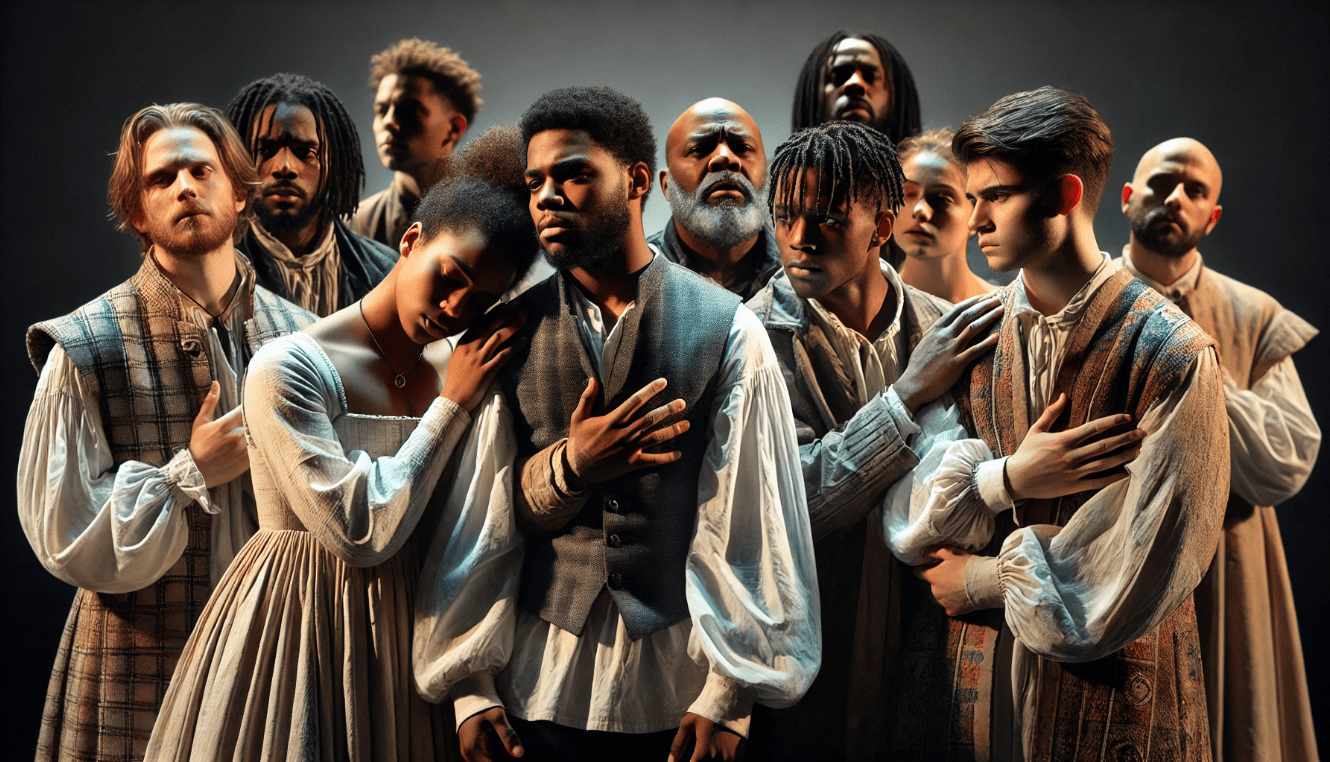
2. Modernizing Settings and Contexts
While the language of Shakespeare’s plays remains largely unchanged, directors often set his works in modern contexts. Picture Macbeth staged in a corporate boardroom, or Romeo and Juliet set in a contemporary urban neighborhood. These modernized settings make Shakespeare’s themes—like ambition, love, and tragedy—more relatable to today’s audience.
Critics must evaluate these adaptations not only for their faithfulness to the original text but also for how effectively the setting enhances the themes. A modernized setting can make Shakespeare feel fresh and relevant, but it also invites critics to explore whether the adaptation stays true to the core emotional and moral struggles of the original play. 🏙️
3. Incorporating Technology into Performances
In today’s digital age, technology plays a significant role in how Shakespeare is presented. From projections and special effects to live streaming and virtual performances, technology allows directors to push the boundaries of traditional theatre. These innovations bring new layers to the storytelling and create immersive experiences for the audience.
For instance, a production of The Tempest might use digital projections to represent the magical island, adding depth to the mystical elements of the play. Critics today have the challenge of evaluating how technology enhances or detracts from the emotional and thematic power of Shakespeare’s work. Does the technology support the narrative, or does it overshadow the characters and themes? 🤖
4. Focus on Universal Themes
Despite the modern twists, Shakespeare’s universal themes—such as love, betrayal, power, and mortality—remain central to modern productions. In fact, contemporary directors often highlight these themes in ways that speak to current societal issues. For example, Julius Caesar might be used to comment on political corruption and the consequences of power, while The Taming of the Shrew may be revisited to explore modern gender dynamics.
Critics today assess how these timeless themes are framed in the context of contemporary culture. Are they relevant to today’s audience? Do modern adaptations make these themes more relatable, or do they risk losing the emotional weight that Shakespeare originally intended? ⚖️
5. Interactive and Immersive Theatre
Another way modern productions are rethinking Shakespeare is through immersive and interactive theatre. In these performances, the audience isn’t just a passive observer—they become part of the experience. For example, in an immersive A Midsummer Night’s Dream, the audience might walk through the forest with the actors, experiencing the magical world firsthand.
Shakespeare’s influence on theatrical criticism is both profound and enduring. From his groundbreaking character development and intricate plot structures to his exploration of universal themes, Shakespeare transformed the way we approach theatre. His works remain the ultimate benchmark for evaluating modern plays, guiding critics in assessing everything from character depth to thematic relevance. 🎭
As we’ve explored throughout this article, Shakespeare’s impact on criticism is far-reaching, influencing everything from traditional reviews to the digital landscape of social media and AI-powered tools. Today’s theatre critics continue to look to Shakespeare for inspiration, whether in the context of modern adaptations, diverse casting, or cutting-edge technology. The adaptability of Shakespeare’s work ensures that it will remain at the heart of theatrical critique for generations to come.
By understanding the role of Shakespeare in shaping theatrical criticism, we not only gain deeper insights into his timeless works but also equip ourselves with the tools to evaluate contemporary theatre in a richer, more nuanced way. Shakespeare’s legacy is alive and well, shaping the future of theatre criticism as much as it defined its past. 🌍
Frequently Asked Questions (FAQs)
1. Why is Shakespeare considered the foundation of theatrical criticism?
Shakespeare’s plays introduced complex characters, intricate plots, and profound themes that revolutionized how theatre is analyzed. Critics began to focus not just on performances, but on the deeper meanings and emotional layers within the text. His works set the standard for evaluating character development, thematic depth, and narrative structure in modern theatre. 🎭
2. How has Shakespeare influenced modern theatre reviews?
Modern theatre critics continue to use Shakespeare’s works as a benchmark for evaluating plays. They examine character depth, plot structure, and how well universal themes like power, love, and betrayal are explored. Shakespeare’s influence pushes critics to look beyond surface-level performance and consider the emotional and intellectual depth of a play. 🧐
3. What makes Shakespeare’s characters important for theatre criticism?
Shakespeare’s characters are multi-dimensional, with internal conflicts and psychological depth. Critics focus on how well these complex characters are portrayed in modern productions. By analyzing how actors embody these complex traits, critics assess the emotional and psychological authenticity of modern performances. 🧠
4. How do modern adaptations of Shakespeare’s works affect criticism?
Modern adaptations of Shakespeare often bring fresh perspectives by changing settings, casting, or context. Critics evaluate how these adaptations maintain the core themes of Shakespeare’s plays while making them relevant to today’s audience. The challenge lies in balancing innovation with the integrity of the original work. 🌍
5. Why is Shakespeare still relevant in today’s digital theatre criticism?
In the digital age, Shakespeare’s themes continue to resonate in online reviews, social media, and AI-powered platforms. Critics often draw parallels between modern works and Shakespeare’s timeless exploration of human nature. Whether through traditional reviews or social media, Shakespeare’s influence shapes how we discuss and critique theatre today. 💻
6. How can I apply Shakespearean criticism to modern plays?
When reviewing modern plays, focus on character depth, thematic exploration, and plot structure—just like Shakespeare’s critics did. Look for complex characters, moral dilemmas, and universal themes that resonate with today’s audience. This approach allows you to analyze plays beyond the surface and uncover their deeper meaning. 🎬
7. What are the most important aspects of Shakespeare’s writing that critics focus on?
Critics focus on Shakespeare’s use of language, character development, and thematic exploration. They assess how well these elements are translated into modern performances. Shakespeare’s use of subtext, symbolism, and multi-layered plots is a major focal point in modern criticism. 📚
8. How does Shakespeare’s influence affect modern theatre performances?
Shakespeare’s impact on modern theatre is seen in how his themes, characters, and structures influence contemporary playwrights and directors. Modern productions often draw inspiration from his exploration of human emotions, power struggles, and moral conflicts. Critics evaluate how these elements are adapted and reinterpreted for today’s audiences. 🎭
